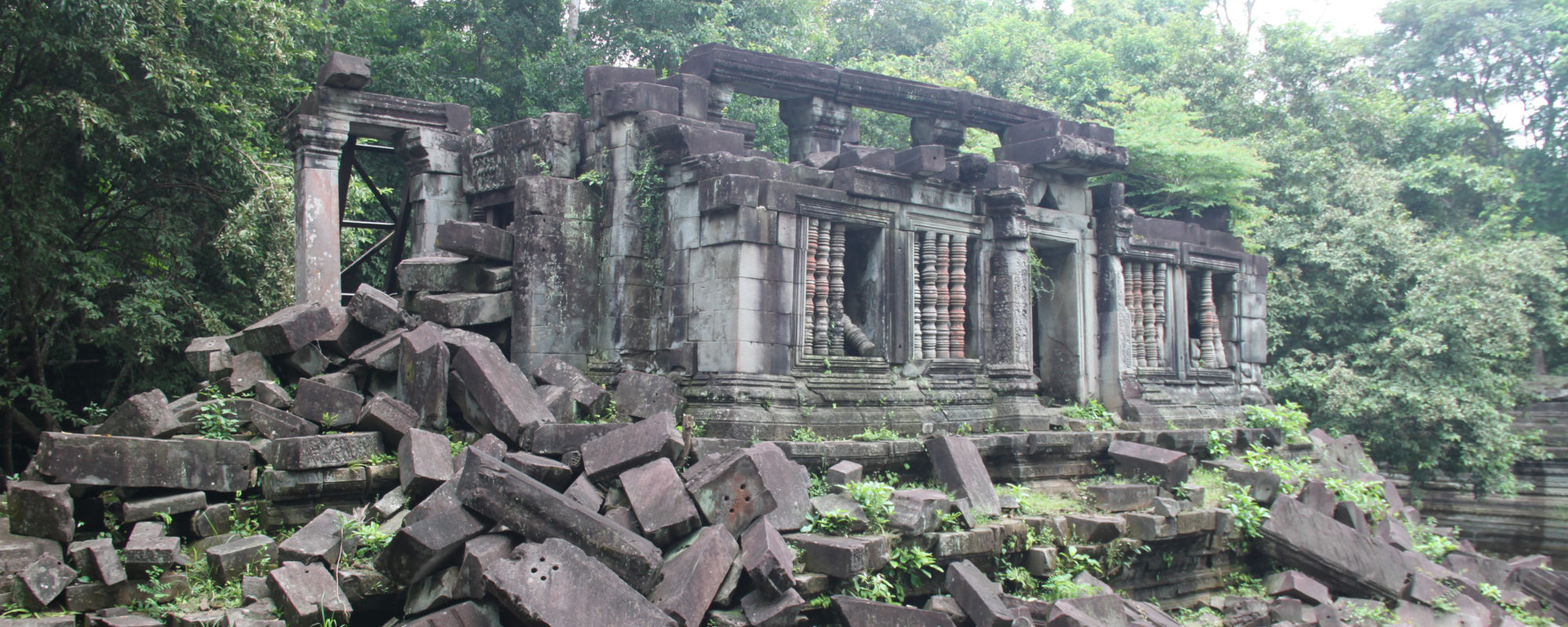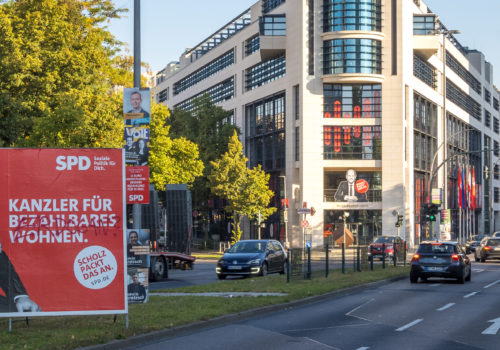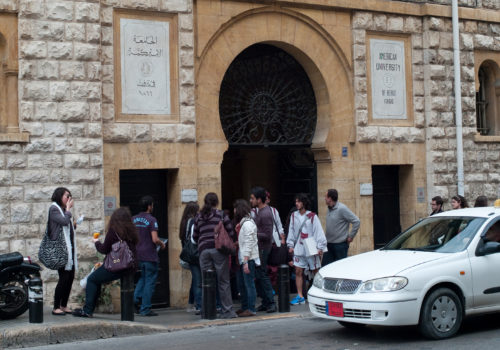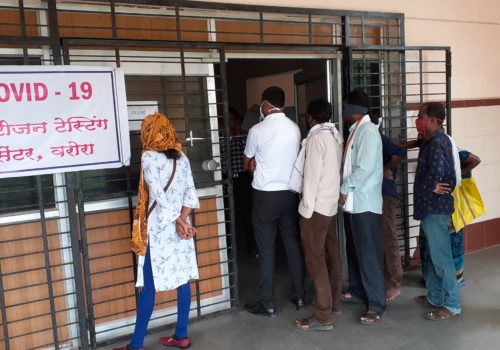Douglas Latchford burnished his reputation as a leading expert and collector of relics from the ancient Khmer Empire for four decades. But mounting evidence shows the burly British art dealer was trading in art looted during some of the darkest periods in Cambodia’s history. As part of the Pandora Papers investigation, Malia Politzer traced the trail of antiquities to offshore accounts on the British Isle of Jersey. She spoke to Glenn Kates about the investigation.
Subscribe to From the Field on iTunes, GooglePlay, Spotify, or wherever you get your podcasts.
From the Field is a production of the Institute of Current World Affairs.
Malia Politzer
Journalist, former ICWA fellow (India, Spain, 2013-15)
Glenn Kates
From the Field host and producer
The sound engineer for From the Field is Oleksii Kushnir.
Read the transcript:
Glenn Kates: The Pandora Papers investigation revealed a $22 million chateau in the French Riviera that was tied to the Czech prime minister and multimillion dollar beachfront mansions in Malibu belonging to the King of Jordan. But most striking, well to me anyway, were the ancient relics that once belonged to the Khmer Empire found in the ledgers of Secret Trusts on the self-governing British Isle of Jersey and in some of the world’s most venerable museums.
From the Institute of Current World Affairs, I’m Glenn Kates, and I’m the host of From the Field, a podcast that brings you stories from ICWA fellows around the world about issues that may affect your world. I recently spoke with Maria Pulitzer, an investigative journalist based in Spain, as part of the Pandora Papers investigation. She reported for The Washington Post and the International Consortium of Investigative Journalists on the unexpected twists and turns in the long, complicated hunt for the missing artifacts of a kingdom that enjoyed its heyday more than seven centuries ago. Maria, welcome to From the Field.
Malia Politzer: Yeah, thank you for having me.
Glenn Kates: So Malia, tell me about Douglas Latchford.
Malia Politzer: So Douglas Latchford was an Englishman who ended up in Bangkok. And he really loved Cambodian antiquities from the ancient Khmer Empire, which was an empire that was basically part of ancient Cambodia and spanned Thailand and Laos. And he really just fell in love with these artifacts. He assembled what was one of the largest collections of Khmer antiquities, probably in the world, and also started dealing them. He also was this premiere expert.
Glenn Kates: So he was a premiere expert and art dealer. But I guess the reason we’re talking about him today is that there was a little bit more to him there, right?
Malia Politzer: Yeah. So basically at the same time that he was professing his love for these relics and donating relics to museums and being a benefactor, prosecutors say that he was deeply involved in looting. [They were] pillaging an estimated 4000 sacred temples in Cambodia and making those sacred relics available to the international art market.
Glenn Kates: Oh, wow. Can you tell me about the significance of these sites?
Malia Politzer: Yeah, so there are, I think, three UNESCO World Heritage sites in Cambodia. And what I think is really sad about this looting is a lot of these—because there’re so many—haven’t been fully studied yet. And so if you take all of these artifacts out without anyone having studied them, you really lose that context. You basically lose a chapter of history. The spiritual loss is tremendous—we sent a photographer to Koh Ker, which is one of the main sites where there seemed to be a big Latchford connection. It was a very unique place and unique time for Khmer art, where they only produced statues there for a few years, maybe a few decades, and they were larger than life. They were very distinctive, and it was heavily pillaged before anyone had a chance to study it whatsoever. So there was a possibility that they would basically be a lost chapter in history. Since no one had the opportunity to study it, they didn’t know what these statues meant in context. I mean, if you have them all piecemeal around the world, you don’t know what it means when they’re put together.
Glenn Kates: Malia, I understand from your reporting that this looting is to some extent happening even to this day and certainly was at least until the time that investigators started cracking open Latchford’s case. But if you could, take me back to the period of the Khmer Rouge, when looting was rampant at the same time as there was a civil war and a regime that was committing genocide, resulting in the deaths of over a million people. What did looting look like from inside Cambodia?
Malia Politzer: You’d have these organized looting networks, which were often led by either military members or members of the Khmer Rouge. And oftentimes they would actually either recruit or force locals to loot their own temples. The locals were at the bottom of the pyramid. For those who were forced, some of them wouldn’t get any money because they were being forced at gunpoint and they would just basically be forced labor—they would be looting their temples and not getting anything. Some of them who did it voluntarily, I understand made a little bit like, I can’t remember with $6 or $12 a day, or something like that. And then there were the next people up who were kind of the heads of these looting networks who would be selling them to the dealers. And they might get something like $500 or $600 from one of these statues. Or [in place of money] one of the statues was traded for a water buffalo. And then that same statue was sold for—I can’t remember if that was the one sold for $1.5 million on the international art market. But you just see that the amount that these statues went for on the international art market was tremendously huge. So the more people buy these things, the more demand there is for these things, and the more that that increases the looting. Also, ultimately, the people who are being funded by it were at one point at least members of the Khmer Rouge and members of the military. So it’s literally funding the conflict and it becomes this vicious circle.
Glenn Kates: So how does a piece of artwork get from a looter to someone like Douglas Latchford or even into a museum?
Malia Politzer: So basically, the way that these looting networks worked is whatever it was that that they were looting at that time would be taken to the border with Thailand—sometimes on ox carts—and would go across the border to intermediary brokers who would then sell them, oftentimes to these dealers in Bangkok. Latchford seem to be connected to a lot of the dealers in Bangkok. Some of them would work for him and he would buy directly from them, or he would buy from the dealers and then from there they’d be sold to auction houses like Sotheby’s and Christie’s and to some of the most esteemed museums in the world. You see them at the Metropolitan Museum of Art and the British Museum of Art and a lot of other museums.
Glenn Kates: So Latchford was profiting from this rather intricate system for decades, and no one knew? I have to say that’s rather shocking. Was there something that finally did him in?
Malia Politzer: I mean, the looting of Cambodia was really well known because, like I said, this is a time of violence and it was well known in the art world that suddenly a lot of Khmer artifacts were coming on the market. And it coincided with this period of great violence, and people would have to be kind of willfully ignorant, putting it lightly, to not make some kind of connection with that. There were rumors, but it wasn’t until 2011 that Latchford’s name started to be more concretely tied to some of these artifacts. And that was specifically with this case of The Athlete, which was the piece that was being sold by Sotheby’s. That turned out to be a looted statue. And the prosecutors learned through seized emails from a British auction house that originally sold the statue that the original owner was Douglas Latchford. So in the process of subpoenaing those emails, they realized that not only was Latchford the original owner for this piece, but he was also the original owner for another piece which was owned by the Norton Simon Museum, and that both of these statues were looted.
Glenn Kates: I understand from your reporting that it’s often difficult to prove artwork is looted, but there are some signs that experts look for it, right? And I guess there were some of these signs on The Athlete that you just mentioned as well. Can you talk a little bit about that?
Malia Politzer: Yeah. So there are signs like, for example, if you break pieces off, if their legs are broken off or arms are broken off and there’s a lot of damage, and oftentimes looters will break off the heads. It’s easier to transport the heads than the body because these are very heavy statues, so then they’ll reattach them. Or oftentimes they transport the head, which is the more valuable part and they’ll bury the bodies. And so later on, people are able to tell that one part of the statue has been buried and another part hasn’t. That would be a sign of looting. Also, any time that there isn’t provenance or ownership documents. So if there’s no clear ownership history with really solid documentation—export documents or any other documents that show where this was taken from in Cambodia, that they had the dig permits, that they had the permission from the national parties to do that. And what the Cambodians are saying, is that actually everything that was taken from 1970 that doesn’t have those documents is looted, which is most of the stuff.
Glenn Kates: So that’s, that’s so sad. So when Latchford becomes a suspect in 2011, it seemed at first glance like he was cooperating with the investigation. But behind the scenes, I understand he was doing something else, right?
Malia Politzer: Yeah, so this is actually how he got on our radar at ICIJ. Since February I’ve been participating in an investigation as part of Pandora Papers, which is the largest leak of financial documents in history. What we found was that three months after investigators first started linking him to the looting of this one significant statue at Sotheby’s, his family started opening an offshore trust on the Isle of Jersey, which was owned by a shell company in the British Virgin Islands, which basically held the entirety of his art collection. So that’s significant because we spoke to investigators who try to track down looted art, and when they run into offshore companies, they basically hit a brick wall. And that’s because there’s so much secrecy around them that unless you have a leak like this, it’s really difficult, if not impossible, to find out who the final owner of these trusts actually is.
Glenn Kates: Yes, so this was really interesting to me because. I’m talking to you now from Kyiv and so much of the critical reporting that goes on here and frankly in other parts of Eastern Europe involves money hiding in offshore accounts. In fact, in the Pandora Papers, Ukrainian politicians showed up more than in any other country in the world. But I tend to think about oligarchs hiding illicit money or politicians buying up real estate. Up until your reporting, I didn’t really think about artwork, but I understand now that that was a mistake. So can you just tell me about some of the reasons that an art dealer or buyer might establish a shell company or a trust?
Malia Politzer: Laundering art is the same as for a lot of other laundering purposes. I mean, it obscures who the end buyer and seller is within a transaction. In some ways, the art market is a lot more open for money laundering than other markets because it’s one of the largest unregulated markets in the world. Until very recently, there hasn’t even been any requirements for dealers to know who the final owner or the final seller is. They could all be done through shell companies, and they would have no idea, even though you’re working with extremely large amounts of money, millions of dollars worth of transactions. And also another issue with art is that it’s all quite subjective what the value is. So it’s not like you can say definitively, oh, this is being under or overvalued—you can kind of set your own prices. And that also makes it really convenient for people who want to launder money.
Glenn Kates: So as I understand, in 2019, Latchford is finally indicted. Tell me what happens then.
Malia Politzer: He was, I think, 88 years old at that time, so he died a year later. He was already nearing the end of his life and, according to his daughter, didn’t have all of his faculties at that time. We did reach out to his daughter and son in law, who were also beneficiaries of these trusts, and they strongly disputed any idea that it was set up for the purpose of obscuring provenance. They said it was just for tax.
Glenn Kates: For tax purposes. So now it’s starting to sound like the offshore investigations I’m used to. Latchford’s daughter has promised to return all of the statues currently in the family’s collection to Cambodia, but there are relics that were once held by or tied to Latchford that are actually to this day still in a long list of quite iconic museums, right? Do we know if these pieces of art were acquired through looting?
Malia Politzer: So this is the big question, right? And this is also the kind of push and pull of museums. So the Cambodian government has said that any statue without a clear ownership history, especially statues that were acquired after 1970, is looted. And I think that they do have grounds to make that claim because of just the rampant looting that those temples saw in that period. But the burden of proof — unfortunately this is the way that museums have been treating this issue—is on the Cambodians to produce these matching fragments. But you can imagine with four thousand temples the process of excavating even one temple is extremely time intensive and requires a lot of resources and a lot of attention and time. And so doing that in all of the temples is very difficult, and of course that makes it much easier for museums to hang on to items.
Glenn Kates: So my understanding is that museums are supposed to research the provenance of artifacts. But it seems like from what you’re saying in a lot of ways, museums are basically shifting responsibility to make it so that they have to prove that the provenance isn’t legitimate. And I’m wondering if there are rules and regulations that require them to really do due diligence in finding out where the artifacts they’re displaying in their halls actually came from.
Malia Politzer: My understanding is that there aren’t any. I mean, obviously, if you have something that’s stolen and it’s clear that it’s stolen, you have to give it back, right? They have their ethics standards, but it’s not like they’re enforced, so it’s pretty voluntary. And the degree to which museums follow these guidelines is not very transparent because it’s all done behind closed doors. One of the things we did as part of this investigation is we did an in-depth survey of all of these museums, where we went on the open source sites and saw what museums were publishing. This only gave us access to museums that were actually publishing some provenance details. There are a number of museums that have significant Khmer collections—The Art Institute of Chicago, for example, has a really big Khmer collection, but they don’t really put any information on it about what was acquired when it was acquired, and who it was acquired from. And so we weren’t able to include them in our survey because we just didn’t know if they had Latchford links because they didn’t put anything on the site. So in some ways, the list contains people who are doing better practices because they at least have some kind of provenance information on their websites. But even then, it’s spotty and it can be incomplete. And then when we reached out to museums asking for them to share records with us only really, I think one museum actually scanned and showed us some records. We didn’t end up including them, because it turned out that the piece didn’t meet one of our two categories, which is either direct Latchford links or links from his associates. But when they shared that document with us, it was amazing. It was a donation—and it was just like a handwritten note, basically saying, we’re donating this to you, and that was it. That was all that they had.
Glenn Kates: Well, that’s amazing, but also kind of disturbing. What do the people who think about these things recommend?
Malia Politzer: So I think the most important recommendation is just transparency. And in some ways, museums like the Metropolitan Museum of Art and the Boston Museum of Fine Arts are to be commended for this. They are putting whatever provenance details they have in terms of the ownership history on their website and making it publicly available. And that’s really important because that’s the only way that the public can hold them accountable for these acquisitions. Of course the next step is if the country of origin is saying we have reason to believe this is looted and we want it back, will they have that dialogue? Will they give those statues back? That’s the next step.
Glenn Kates: Okay, so there are still artworks from Cambodia of disputed provenance held in major museums right now, right? What is the Cambodian government doing? And what are the museums doing?
Malia Politzer: Well, there are some artworks that the government has given on permanent loan. There are some things that were excavated with the permission of the government, but basically they’ve had kind of continuous legal ownership of all of these cultural artifacts in an uninterrupted way. So if stuff has been taken, it was stolen basically. So what they’re saying is anything that doesn’t have a clear, pure line of ownership history, we consider this to be looted. By that definition—and I don’t wanna put words in their mouth—I would think that many of these pieces would fit that you see at the Met right now. But this is where the museum disputes it, because according to them, they have the ownership history, and you can’t prove that it was looted. Their very definition of what might be considered looted is not the same as the Cambodian government’s definition.
Glenn Kates: So, Malia, in your reporting, you obviously focused on Latchford in this specific case. Did you get any sort of sense about how frequently this sort of thing happens on a global scale? I mean, in how big the industry of looted artwork is.
Malia Politzer: Honestly, I am never going to go into a museum and feel—the experience of going to a museum is totally different for me now because my first thought is how much of this stuff is looted. I don’t want to be overly cynical about it, but especially in the UK and Spain, places that were part of colonial empires, I would imagine that a lot of that stuff was taken without the permission of the countries of origin. This is an issue that I think is just getting started and I think we’re going to be seeing a lot more questions around this as countries that have been looted are asking for their cultural artifacts back and the people who are the holders of that don’t want to give it back.
Glenn Kates: Well, Malia, I really do hope that that’s one of the effects of your reporting — that people do begin to ask more questions. Thank you so much for joining me today.
Malia Politzer: Wonderful. Thank you so much, Glenn. I really appreciate it.
Glenn Kates: That was Malia Politzer in an interview with me, Glenn Kates. This has been From the Field, a podcast of the Institute of Current World Affairs. Our sound engineer is Oleksii Kushnir. Subscribe and download wherever you get your podcasts. And if you enjoyed what you just heard, please give us a rating. You can really help us grow.
Top photo: Beng Mealea temple from the Angkor Wat period, Cambodia (Wikimedia Commons)







